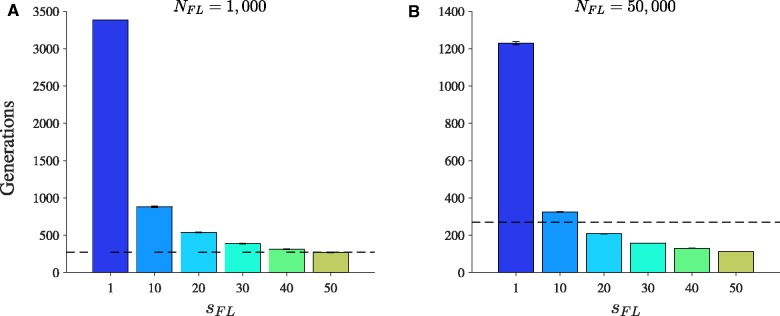Fig. 4.
Varying the effect of beneficial substitutions on fitness of free-living cells. Parameters: , γ = 5, and a linear fitness function. When NFL = 1000, the population size of free-living genomes is equal to the number of eukaryotic hosts; when , the population size of free-living genomes is equal to the number of cytoplasmic genomes (assuming N = 1000 and n = 50, as in fig. 2). The y-axis shows the mean number of generations to accumulate a single beneficial substitution (see fig. 2F legend for details). On the x-axis, we vary the effect mutations have on the fitness of free-living cells. A mutation on a free-living genome has an sFL-fold effect on its cell’s fitness compared to the effect of a mutation on a cytoplasmic genome on its host’s fitness. The dashed line represents the mean number of generations required to accumulate a beneficial substitution assuming uniparental inheritance (relaxed bottleneck) under equivalent conditions (; see fig. 2F). (A) Population size of free-living genomes equals 1000. (B) Population size of free-living genomes equals 50,000. Error bars are ± standard error of the mean.

